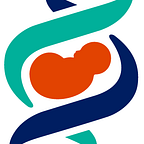Ms. Walker Goes to Washington:
A Scientist’s Life-Changing Experience of Visiting Capitol Hill
Birth Defects Insights, a Teratology Society Blog
By Lauren M. Walker, BS
I focused on the soft click-clack sound of people’s shoes on the marble floor to redirect my nervous energy. “We have about 20 minutes before our first meeting,” Sally Schwettmann, our Federation of American Societies for Experimental Biology (FASEB) staff guide, said, “Let’s hang out outside until 5 minutes before.” We were standing outside the office of Congressman Mark Takano — U.S. Representative for California’s 41st district, my district — on Capitol Hill. Through a Teratology Society-funded FASEB Howard Garrison Public Affairs Fellowship, I was able to join a coalition of 58 scientists from 30 states to participate in FASEB’s 2019 Capitol Hill Day. Capitol Hill Day’s objective is to remind our representatives and senators of the important role that biomedical research plays in the lives of everyday Americans, and how critical stable and sufficient funding from key agencies like the NSF and NIH is in supporting research discoveries and the future of STEM (science, technology, engineering and math).
FASEB is an association of 29 different scientific societies — including The Teratology Society — that serves to promote research and education in the biomedical sciences. FASEB encourages scientists to get involved with their communities and communicate the importance of their research. Each year, FASEB organizes a Capitol Hill Day to encourage face-to-face meetings of scientists and policy makers. These meetings are critical as they introduce to policymakers the people behind the research and allow a sharing of real-life impacts of research funding decisions. FASEB hosts an advocacy training dinner the evening before to prepare participants for the Hill. During the dinner, I was delighted to practice my talking points with Dr. Howard Garrison (pictured with me above), the scientist after whom my fellowship is named. Dr. Garrison recently retired after leading the FASEB Office of Public Affairs for over 30 years. Over dinner, he shared his previous Hill Day experiences and advised me to stay engaged and be persistent. “Time and people do change,” he said, “and you can be a part of that.”
During our meeting with Congressman Takano’s staff the next morning, I relayed how my project’s funding was cut just as I was preparing for my Advancement to Candidacy exam. Losing that funding meant building up a new project from scratch, and hoping that my lab could secure enough funding to see the project to completion and culminating in my doctoral degree. After a year, my lab successfully secured an NIH grant. I shared with the staff what it felt like to be anxious about the future of both my education and career. I stressed that both depend on the quantity and quality of my work which, in turn, depend on research funding. It may have been chilly outside that morning in Washington, DC, but my passion for securing funding kept me warm.
It may have been chilly outside, but my passion for securing funding kept me warm.
I walked out of that first meeting feeling exhilarated and valued. I couldn’t wait for our next meeting! For the rest of the day, my co-delegate, Dr. Ralph Bradshaw of the University of California, Irvine, and I teamed up to compile several examples of the real, human impacts of research funding that our representatives could use to support their arguments and influence decisions on increasing resources for biomedical research. While our California representatives are already quite supportive of NSF and NIH research funding, Dr. Bradshaw was quick to point out that “it’s always good to visit with friends.” Showing up to supportive policymakers’ offices to thank them for their support and reiterate the importance of reliable research funding shows that scientists are paying attention to the Hill. Moreover, it reminds policymakers that scientists are invested in the future of science funding.
As recent years have demonstrated, biomedical research funding is not static. We must speak up or risk being forgotten. Without our voices, funding could be further constrained in future years. It’s especially critical that policymakers hear from up-and-coming scientists — graduate students and early career scientists who are paving the way for the future of scientific research. The ultimate goal of Capitol Hill Day is to help scientists establish long-term relationships with their representatives’ offices through regular interaction with policymakers. If you’re already a science advocate, thank you for your contributions. If you haven’t considered becoming a science advocate yet, please do. It’s well-worth it, more influential, and less terrifying than you may think. Participating in science advocacy events in your community or through social media calls-to-action are great ways to get started. If logistics allow, also consider taking part in a future FASEB Capitol Hill Day. It’s a life-changing experience that I certainly can’t wait to participate in again.
About the Author
Lauren Walker is a PhD Candidate studying environmental toxicology at the University of California, Riverside.
About the Teratology Society
To understand and prevent birth defects and disorders of developmental and reproductive origin, the Teratology Society promotes multi-disciplinary research and exchange of ideas; communicates information to health professionals, decision-makers, and the public; and provides education and training. Scientists interested in or already involved in research related to topics mentioned in this blog are encouraged to join the Teratology Society and attend the 59th Annual Meeting June 22–26, 2019, the premier source for cutting-edge research and authoritative information related to birth defects and developmentally-mediated disorders. Teratology Society members include those specializing in cell and molecular biology, developmental biology and toxicology, reproduction and endocrinology, epidemiology, nutritional biochemistry, and genetics, as well as the clinical disciplines of prenatal medicine, pediatrics, obstetrics, neonatology, medical genetics, and teratogen risk counseling. In addition, the Teratology Society publishes the scientific journal, Birth Defects Research. Learn more at www.Teratology.org. Find the Teratology Society on LinkedIn, Facebook, and Twitter.
